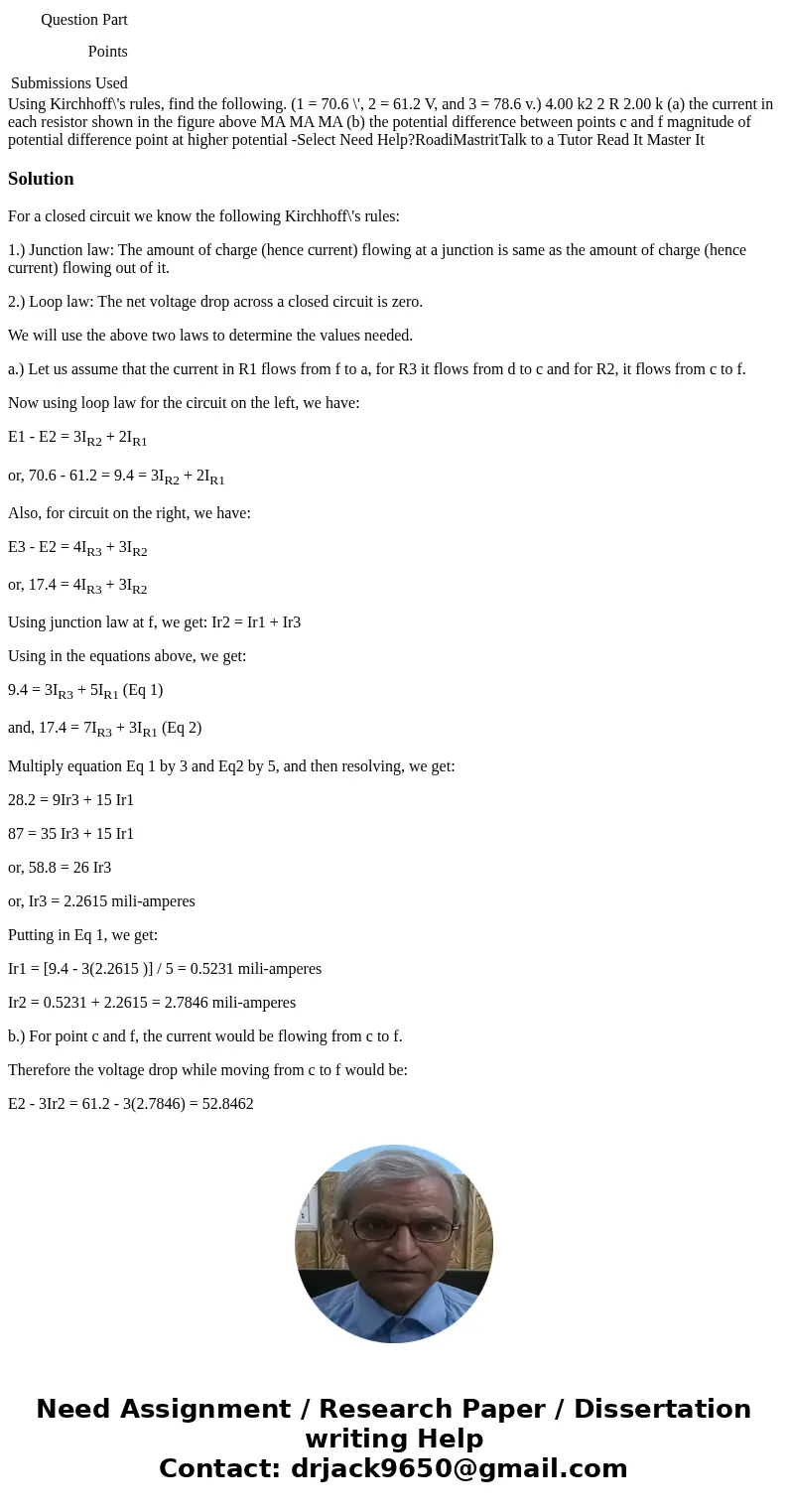Question Part Points Submissions Used Using Kirchhoffs rules
| Question Part |
| Points |
| Submissions Used |
Solution
For a closed circuit we know the following Kirchhoff\'s rules:
1.) Junction law: The amount of charge (hence current) flowing at a junction is same as the amount of charge (hence current) flowing out of it.
2.) Loop law: The net voltage drop across a closed circuit is zero.
We will use the above two laws to determine the values needed.
a.) Let us assume that the current in R1 flows from f to a, for R3 it flows from d to c and for R2, it flows from c to f.
Now using loop law for the circuit on the left, we have:
E1 - E2 = 3IR2 + 2IR1
or, 70.6 - 61.2 = 9.4 = 3IR2 + 2IR1
Also, for circuit on the right, we have:
E3 - E2 = 4IR3 + 3IR2
or, 17.4 = 4IR3 + 3IR2
Using junction law at f, we get: Ir2 = Ir1 + Ir3
Using in the equations above, we get:
9.4 = 3IR3 + 5IR1 (Eq 1)
and, 17.4 = 7IR3 + 3IR1 (Eq 2)
Multiply equation Eq 1 by 3 and Eq2 by 5, and then resolving, we get:
28.2 = 9Ir3 + 15 Ir1
87 = 35 Ir3 + 15 Ir1
or, 58.8 = 26 Ir3
or, Ir3 = 2.2615 mili-amperes
Putting in Eq 1, we get:
Ir1 = [9.4 - 3(2.2615 )] / 5 = 0.5231 mili-amperes
Ir2 = 0.5231 + 2.2615 = 2.7846 mili-amperes
b.) For point c and f, the current would be flowing from c to f.
Therefore the voltage drop while moving from c to f would be:
E2 - 3Ir2 = 61.2 - 3(2.7846) = 52.8462
Therefore the magnitude of the difference is 52.8462
Also, as the current flows from c to f, point c will be at higher potential.

 Homework Sourse
Homework Sourse